
Marking its second major release of 2025, Kali Linux 2025.2 is here, delivering several desktop upgrades, interface refinements, and new tools for cybersecurity enthusiasts.
Unlike general-purpose distros like Ubuntu or Fedora, Kali is specifically aimed at cybersecurity tasks such as penetration testing, digital forensics, and reverse engineering.
Let’s take a look at what this release brings to the table.
🆕 Kali Linux 2025.2: What's New?

Under the hood, Kali Linux 2025.2 is powered by Linux kernel 6.12 and comes loaded with a host of new tools like AzureHound, CRLFuzz, Gitxray, Rubeus, and the recently updated BloodHound Community Edition.
The key highlights of this release include changes like:
- GNOME 48
- KDE Plasma 6.3
- Reworked Menu
GNOME 48
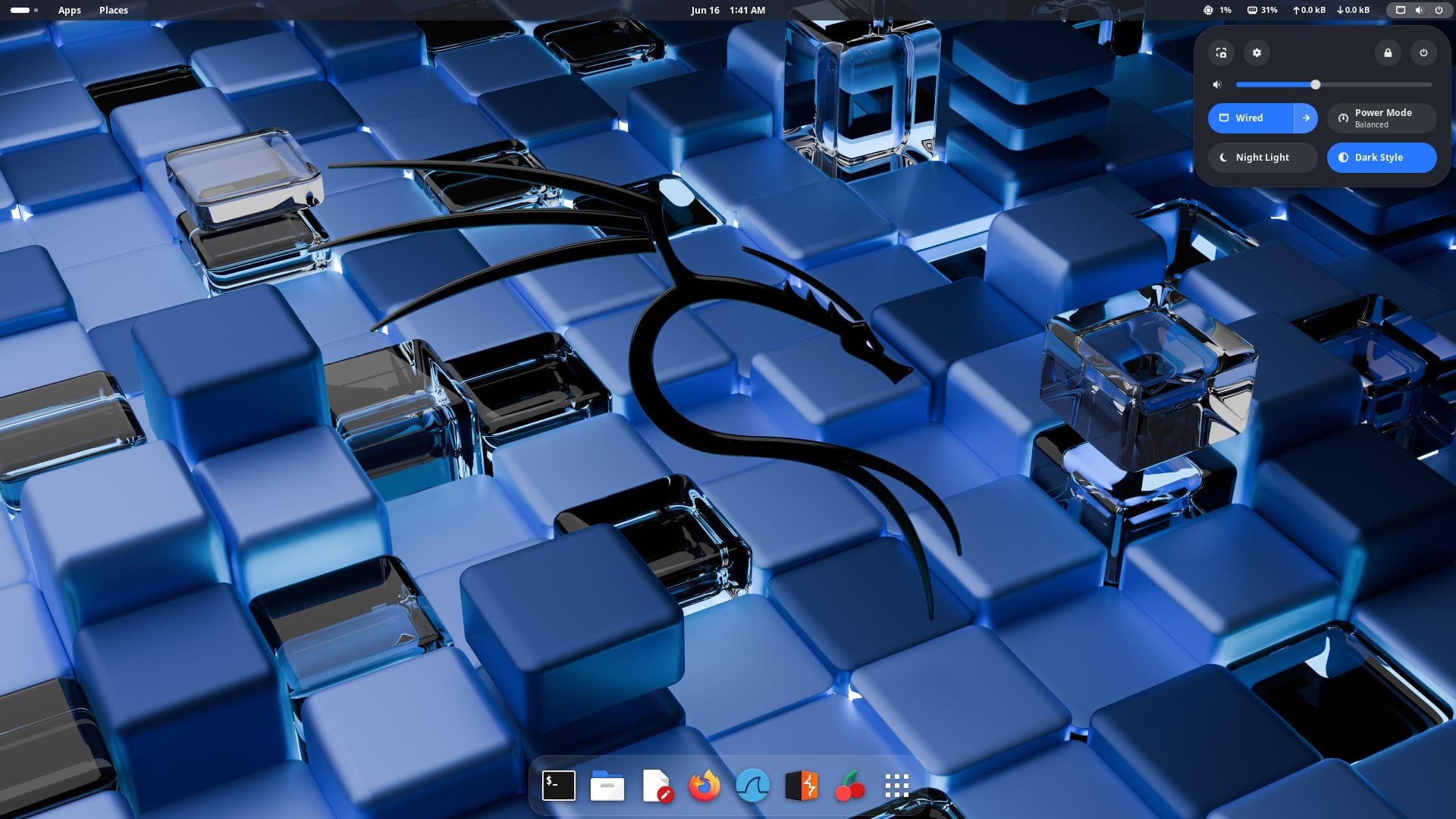
While the default Xfce session on Kali Linux is a good one, those who prefer a more modern-looking desktop usually move over to GNOME. This release of Kali comes equipped with GNOME 48, introducing many new features that complement the desktop experience.
Among those are things like notification stacking for better management, a Wellbeing feature for setting screen time limits, support for HDR monitors, and much more.
The Kali Linux team has also included some tweaks to reflect their visual style, and there is a new VPN IP extension developed by a community contributor that displays a VPN connection’s IP address in the panel for easy access.
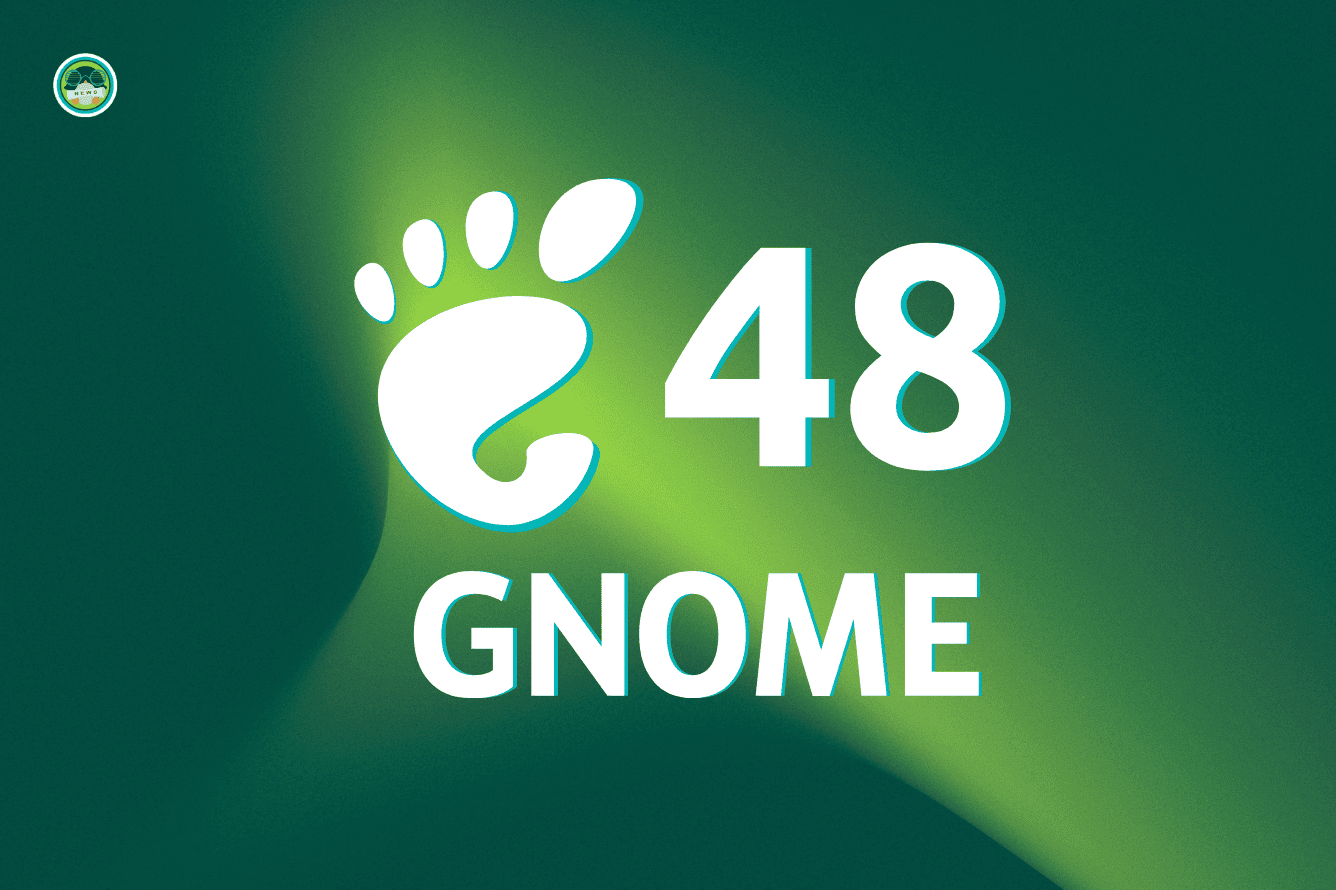
KDE Plasma 6.3
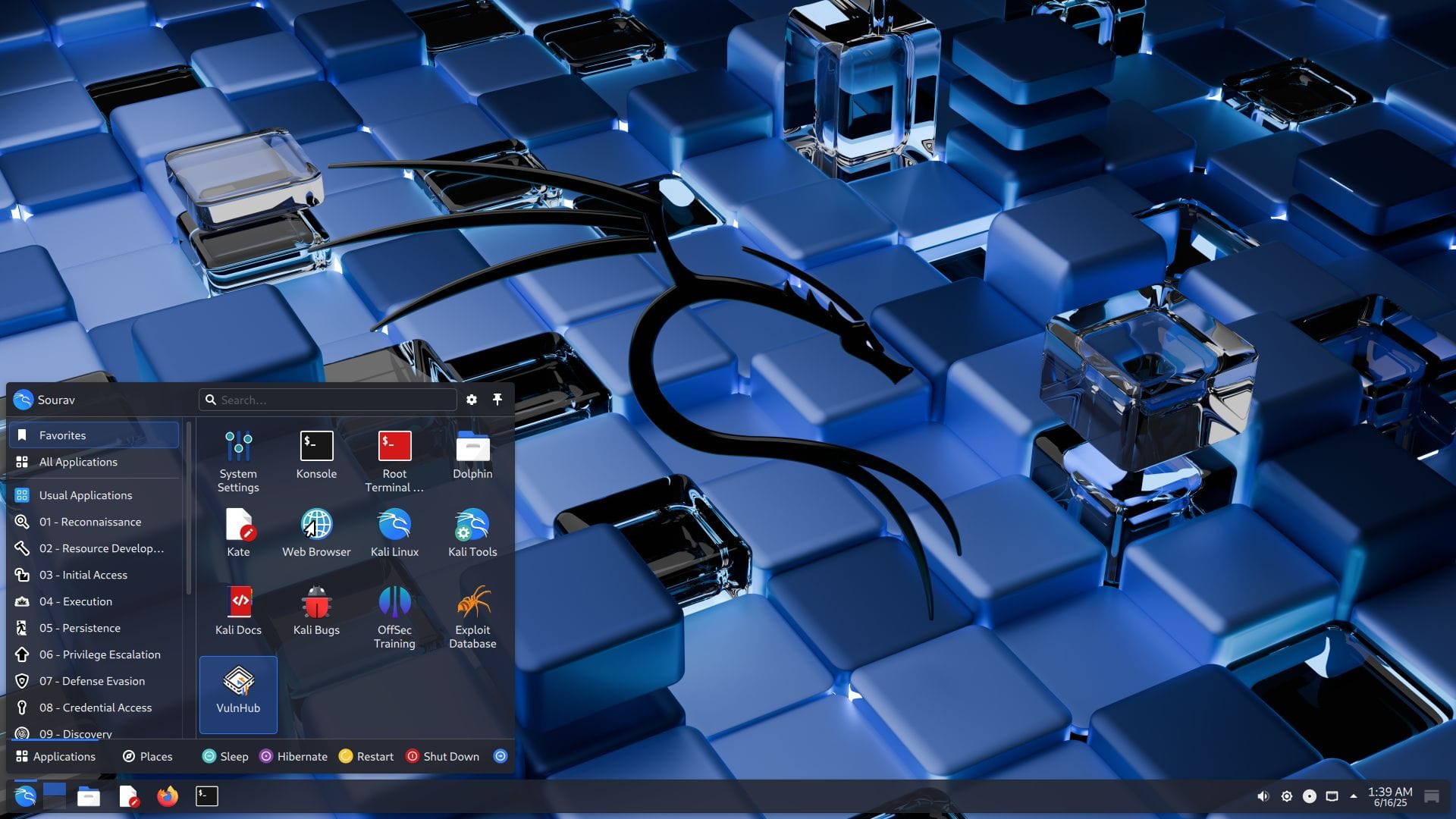
If you don’t prefer GNOME, Kali Linux offers KDE Plasma 6.3 as an alternative. It comes packed with new bits like the ability to Clone Panels, better support for fractional scaling, and more accurate colors when using Night Light.
Additionally, the System Monitor app now provides more accurate CPU usage reporting, as well as improved battery, GPU, and printer reporting.
Reworked Menu
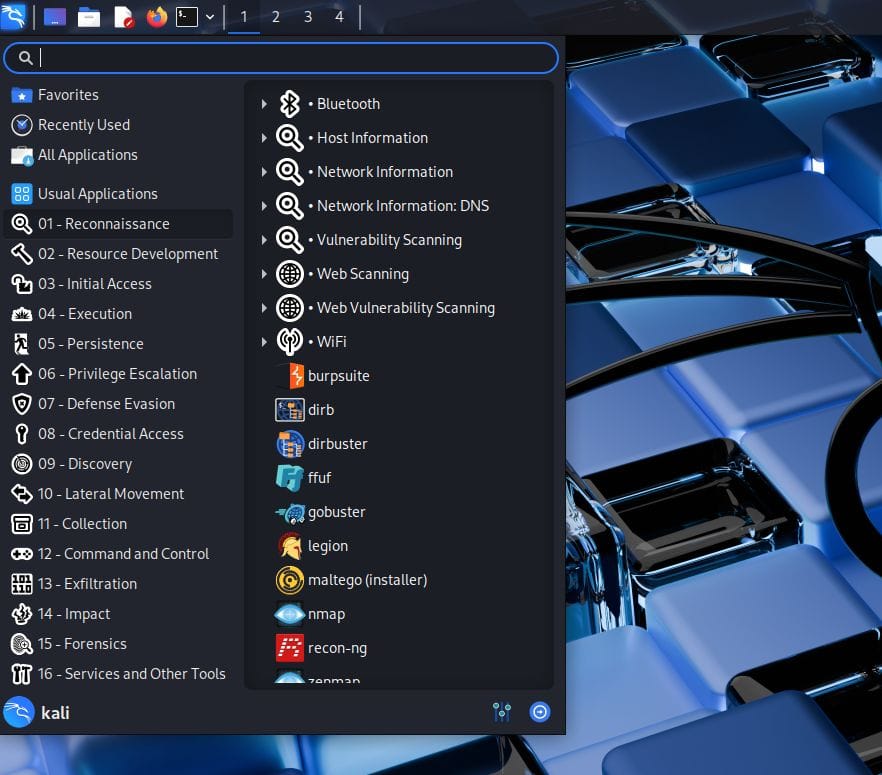
In line with the MITRE ATT&CK framework, Kali Linux has updated its menu layout, so tools are now grouped by how attackers (cyber adversaries) actually operate. This makes it much easier for users to find and explore tools based on what they want to do, rather than needing to know specific tool names or categories.
Earlier, they used the menu setup from BackTrack, which was based on WHAX. This older menu was not very organized, making it tiresome to update with new tool entries and difficult for end users to find tools easily.
🛠️ Other Changes and Improvements
We close this out with a few notable changes that weren't mentioned earlier:
- Kali Linux is now on Bluesky and PeerTube.
- Addition of three new community wallpapers.
- Xclip for automatic terminal output transfers to the clipboard.
- Wireless injection on the TicWatch Pro 3 via Kali NetHunter.
- New download mirrors in India and South Korea, though the Korean mirror may not work if you're using a VPN.
You can find more details in the official announcement blog.
📥 Get Kali Linux 2025.2
If you are looking for a fresh installation, then visit the official website to get the latest images. You can also find the live and weekly images for Kali Linux there.
For existing users, they can execute these commands to get the new release:
echo "deb http://http.kali.org/kali kali-rolling main contrib non-free non-free-firmware" | sudo tee /etc/apt/sources.listTo obtain the new signing key:
sudo wget https://archive.kali.org/archive-keyring.gpg -O /usr/share/keyrings/kali-archive-keyring.gpgStart the upgrade process:
sudo apt update && sudo apt -y full-upgradeCopy the default configuration files to your home directory:
cp -vrbi /etc/skel/. ~/Finally, reboot:
[-f /var/run/reboot-required ] && sudo reboot -fThe upgrade guide should be your next stop if you face any issues during the procedure.
Suggested Read 📖
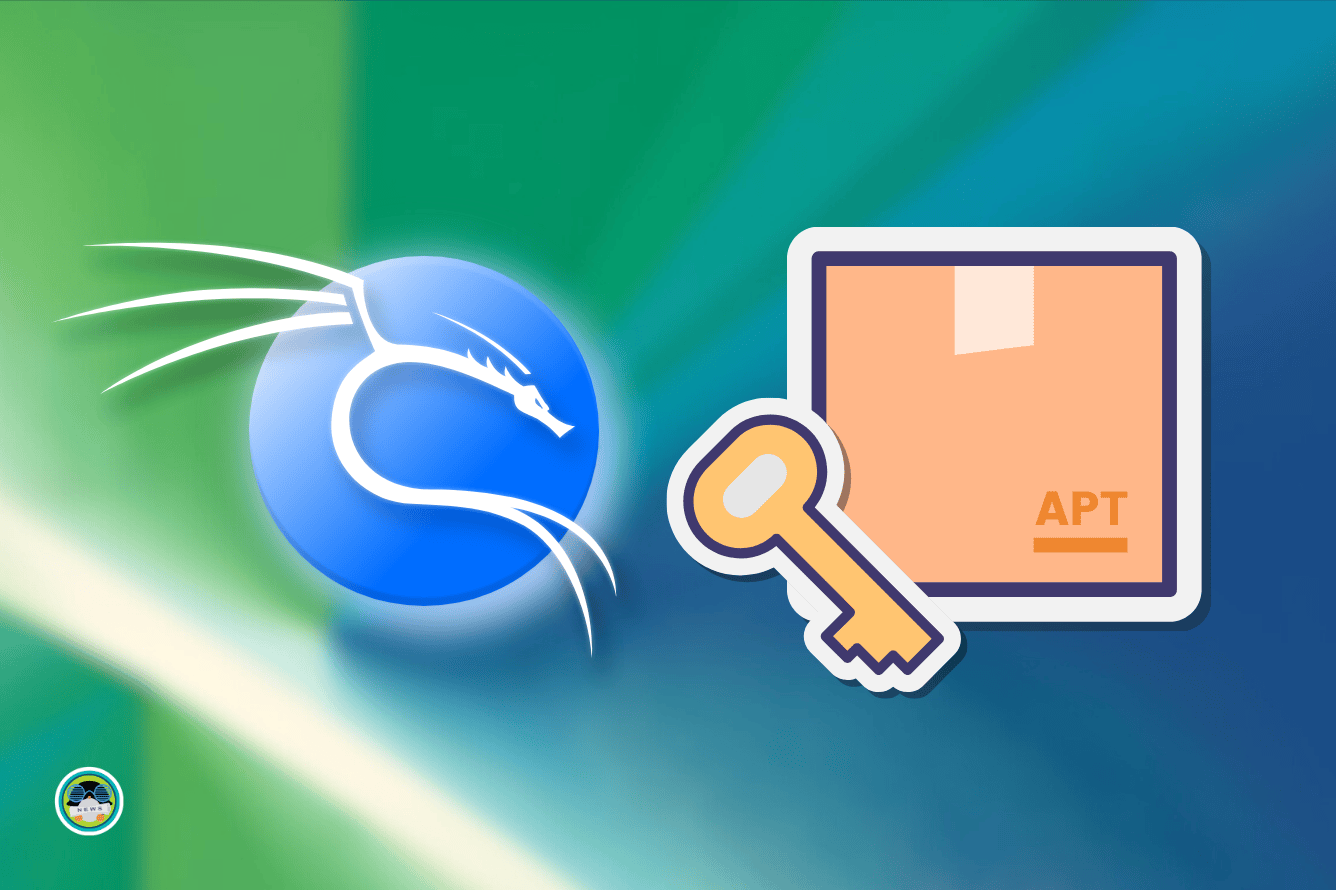
- Even the biggest players in the Linux world don't care about desktop Linux users. We do.
- We don't put informational content behind paywall. Your support keeps it open for everyone. Think of it like 'pay it forward'.
- Don't like ads? With the Plus membership, you get an ad-free reading experience.
- When millions of AI-generated content is being published daily, you read and learn from real human Linux users.
- It costs just $2 a month, less than the cost of your favorite burger.
Become a Plus Member today and join over 300 people in supporting our work.












